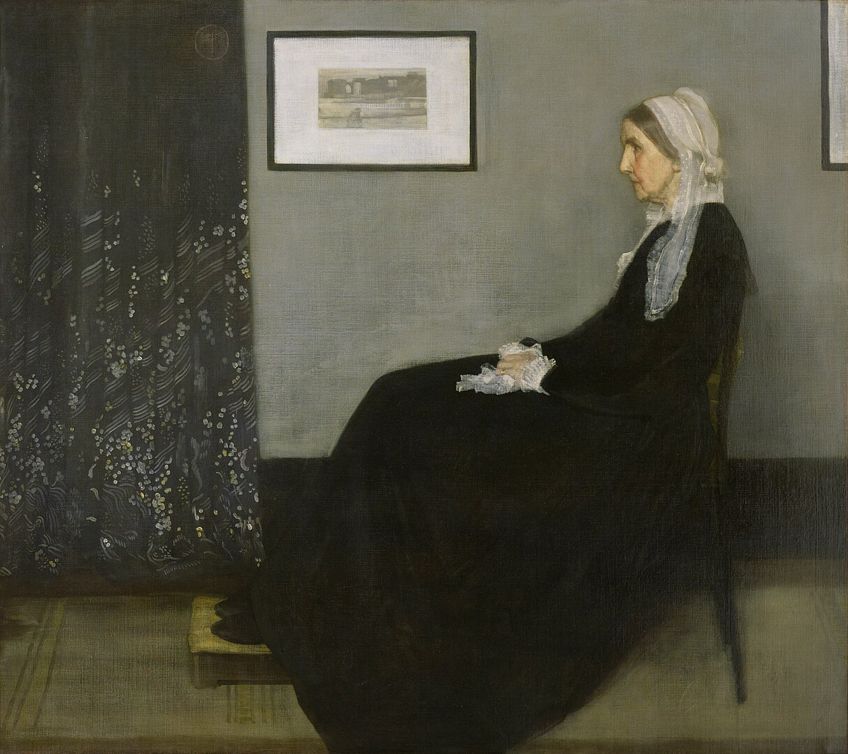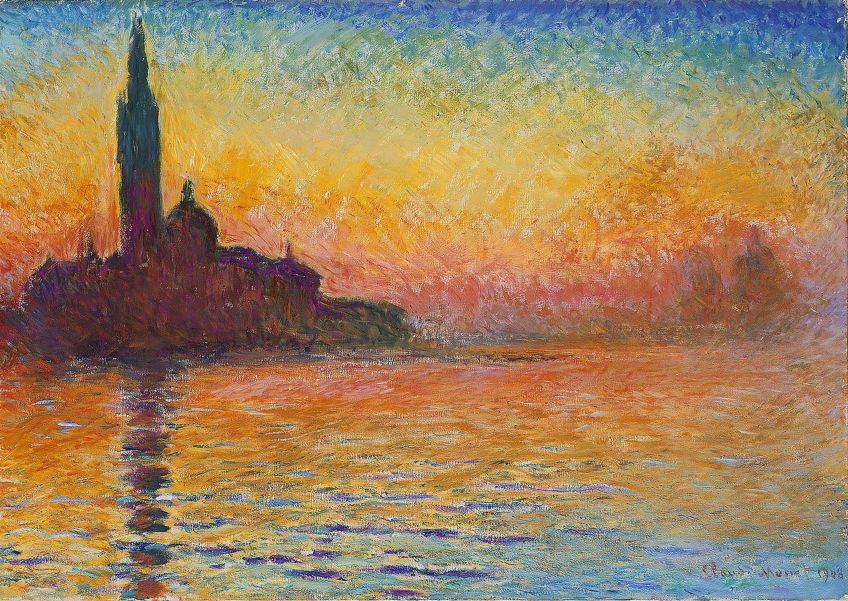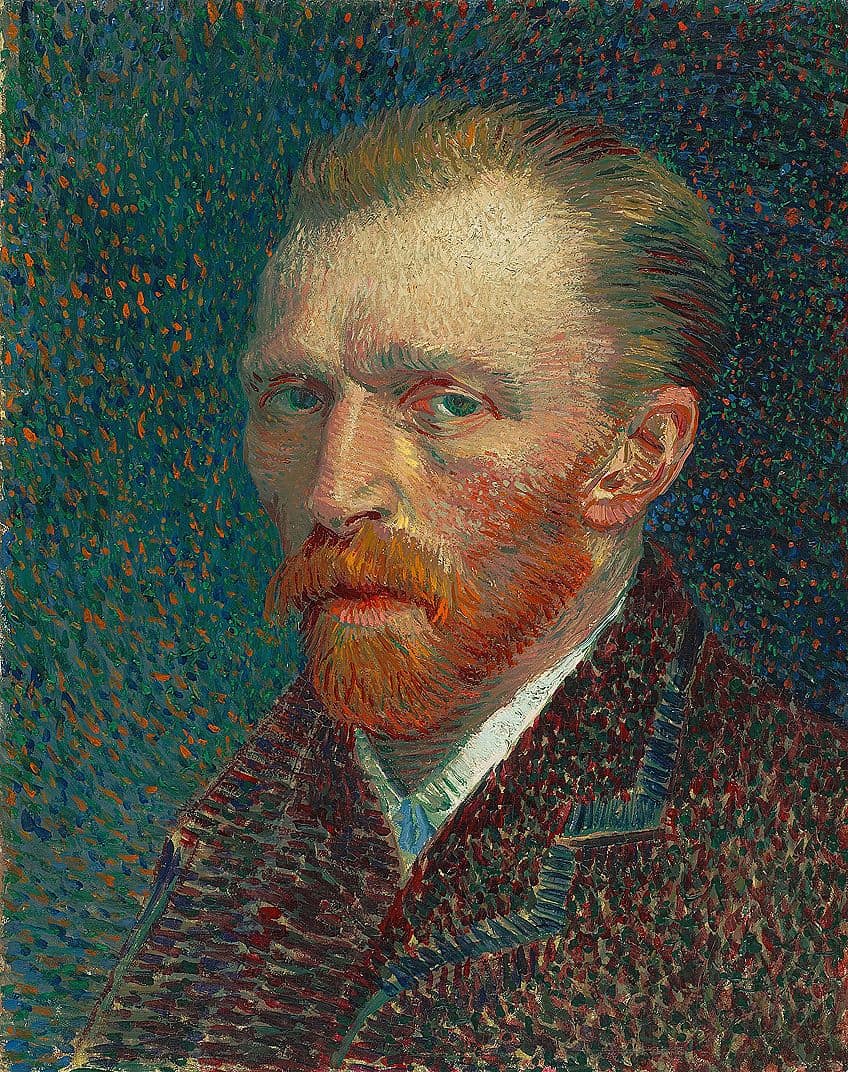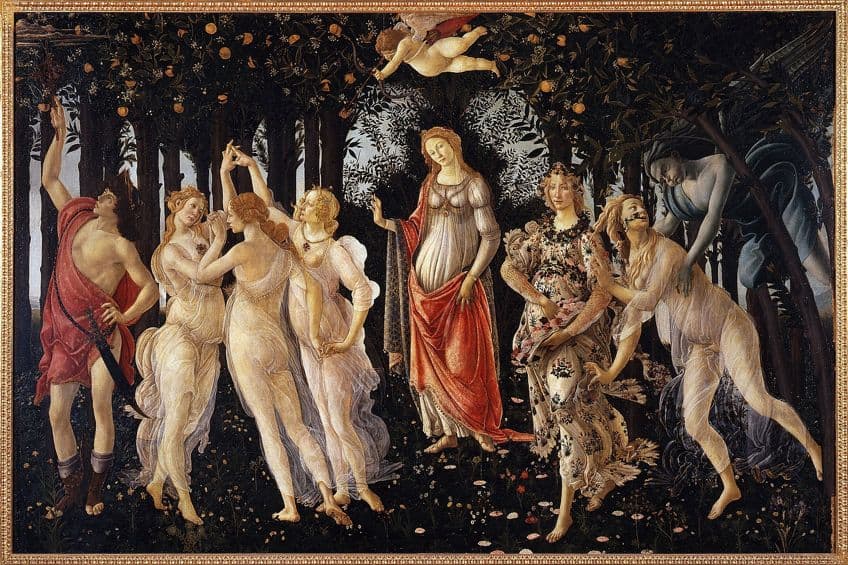Fundamentals of Art – Understanding the Basics of Art
What are the building blocks of art and how do artists apply them? Today, we will look at the fundamentals of art, which are regarded as the underlying foundations of artwork. By better understanding the fundamentals of painting and other visual art forms, we can improve our own artworks and know how to analyze and appreciate other artworks. Let us find out more about the basics of art and how they are used effectively by artistic individuals.
Table of Contents
Understanding the Fundamentals of Art
Art can be a very personal and intimate form of expression. It allows individuals to convey ideas, feelings, and symbolic messages in a way that can mentally and emotionally move those who view them. Every artist has a unique way of expressing themselves, drawing from a rich legacy of styles and movements that have emerged through the centuries.

Yet, underlying all of these various modes of expression, we can discover certain fundamental principles that have been adhered to by the artists. While the fundamentals of art are regarded as the foundations of art, they are not always apparent to those who do not know what to look for. It takes an understanding of the basics of art to fully appreciate how the artist has used them effectively in his or her own distinct manner.
What Are the Building Blocks of Art?
If we take any artwork, we can strip it down to the various elements of art. These elements are the most basic visual components of art and comprise value, space, texture, color, form, shape, and line. They serve as a visual language that is used by educators to discuss art and how it works with students. These elements are then manipulated and organized using various artistic principles that serve to convey the artwork’s visual message or feeling. These principles are proportion, movement, contrast, variety, pattern, balance, and emphasis. The principles serve as guidelines that artists can use and can help them achieve a sense of coherence and harmony.
The fundamentals of art (which also comprise certain elements of art such as color, form, and value) are often regarded as the building blocks or basics of art.
The Fundamentals of Art in Detail
Whether you want to learn how to improve your own artistic abilities, or simply wish to learn how to appreciate art on a deeper level, then an understanding of the fundamentals of painting, sculpture, photography, and sketching is essential. Throughout all these mediums, and across numerous styles, we can observe the same underlying fundamentals of art. These foundations of art include color, form, value, composition, anatomy, perspective, and brushwork.

Color
Can you imagine how drab and dreary the world would be without color? Color seems to have a direct effect on our moods – just think of how different you feel when you wake up to a bright and cheery blue sky compared to a sky filled with endless gray clouds. Color plays an integral role in nature as well, acting as a means of communication between the various species of animals and plants on our planet. Certain plants and insects use color to either attract or repel potential pollinators or predators. Animals use color to attract mates or as social status signals to others in the group.
As a species, we humans too associate certain colors with certain feelings and moods, and a great artist knows how to use these colors to invoke those emotions within us.
We have turned our understanding of color into an exact science over time, working out precisely which frequencies each color represents on the color spectrum. This color spectrum has over time come to be represented as a color wheel that artists can refer to when figuring out which colors to combine or place next to each other. As artists began to gain a better understanding of the connection of each color in relation to the others, certain color theories developed, enabling them to produce consistent results through practiced application and experimentation.

Color theory has led to a deeper understanding of color, enabling artists to break the various parts of the spectrum down into hues, observe how the lightness of each hue can be affected by adding black or white, figure out how we can alter the intensity or saturation of a color, and learn how to determine the temperature of a color. As a result of understanding color theory, artists have been able to learn exactly how to create specific hues and how those hues impact us on a deeper level. This has given rise to a diverse range of artworks that all use color in unique ways, ranging from the soft pastel-like colors featured in Claude Monet’s landscape paintings to the bold and in-your-face colors of Roy Lichtenstein.
Composition
The manner in which all the various elements are organized and arranged within an artwork is referred to as “composition”. A good composition is produced by using the various principles of art to produce a sense of overall harmony. Balance is an important principle that can be utilized to produce harmonious compositions by either distributing the visual weight of the various elements evenly (symmetrical balance) or unevenly (asymmetrical balance). An excellent way to get the various elements of a composition to stand out is through the application of contrast. By contrasting the shapes, textures, colors, and values that are placed next to each other, you can generate more visual interest in the artwork.
There are various ways that you can divide the artwork, such as using the rule of thirds, or the golden ratio, for example.
Composition is the very first step of creating an artwork, and is therefore very important, as this initial layout of the various objects and subjects will affect the subsequent steps and the quality of the final product. First, lay out the various elements in a way that utilizes both positive and negative space effectively. At this stage, just the basic shapes can be added so that you get a feel for the arrangement before going over them with greater detail.

A composition will usually have certain elements placed in the foreground, midground, and background, which creates a sense of depth within an artwork. By playing around with perspective, lighting, and point of view, artists can further enhance this sense of depth within an artwork. Ultimately, a good composition will feature objects arranged in a manner that makes the eye of the observer move around the canvas from one element to another, providing context and meaning as the message becomes more apparent.
Value
To put it simply, the value of a color is determined by how dark or light it is. These values are best observed when rendering an artwork to grayscale. It doesn’t really matter if an artist paints in low or high key (mainly dark or mainly light colors) – what matters is the value of each color in relation to the other. By applying these relative values accurately, an artwork will appear more realistic, no matter whether the brushwork is detailed or loose.
A great exercise for learning how to apply value is to first limit yourself to three values (white, gray, and black) and try to determine which areas would be directly illuminated by a light source (white), which area would be indirectly lit (gray), and which area would be in shadow (black).
Form
The form of an object is determined by its shape and volume in art. Although people often think of shape and form as the same thing, despite being related, they are actually two different elements. The shape of an object can be thought of as the space within its boundaries on a two-dimensional plane, or the figure created when outlining those boundaries. Think of shapes such as circles, triangles, and squares – each is determined by the defining lines around an enclosed space.

When shapes are represented in a three-dimensional place, they become forms, for example, a triangle shape will become a pyramid form, a circle will become a round object, and a square will effectively become a cube. This is easier to produce and observe in three-dimensional forms, such as in sculpture, yet, it can also be emulated in a two-dimensional artwork by using shading and other methods which add illusionary depth to the object. Not all forms are precise and geometric, though, and you also get examples of organic forms in both nature and art that are irregular and asymmetrical.
Anatomy
While form is the study of the three-dimensional shape of an object, anatomy is the study of the internal workings of living beings – from animal to human. Yet, with a better understanding of how the skeletal system works, along with the adjoining muscles, tendons, organs, skin, etc, artists can also learn how these internal aspects shape the external form of the subject. Many artists, especially those who lived during the Renaissance period, were obsessed with learning how to draw as realistically as possible and spent many hours dissecting and examining human cadavers to learn more about human anatomy.
This not only advanced artistic understanding but also scientific and biological understanding, as anatomical drawings would also be used to educate people about how the human body functions.

In art, specifically, by understanding how skeletons and muscles worked, artists were better able to grasp the human body’s range of movement, and how certain poses would require the use of specific groups of muscles – all of which would be visible in a sculpture. Thanks to these studies into anatomy, the figures presented in artworks became more life-like and scientifically accurate, helping to take art – and consequently the contemporaneous culture as a whole – out of the Dark Ages and into a new era of enlightenment. Whereas older artworks would often feature rigid figures with inaccurate proportions, and subjects’ heights were often determined by social hierarchy, from the era of anatomical study onwards, artists strove for greater realism in their portrayal of humans, animals, and plant life.
Perspective
Very often, artists will want to create the appearance of three-dimensional space in their two-dimensional artworks, and this is where perspective comes in. In the real world, if we look at a scene from our particular point of view, the world around us will look a certain way from our perspective. For instance, even though two tractors in real life would be the same size, if one of those tractors were next to us, and the other was far off in the distance in a field, the one furthest from us would appear much smaller in scale. The same illusionary effects can be applied in a flat two-dimensional artwork too.
For example, if we had a one-point perspective with a vanishing point on the horizon we will notice that in a painting of a street lined with buildings, for example, all of the buildings will become progressively smaller as they recede towards the vanishing point.

If all of the buildings were rendered the same size, then there would be no illusion of depth, and all of the objects would appear as though they are in the foreground. So, by effectively applying perspective in a painting, you can draw the viewer into the artwork, as it will appear more life-like. Conversely, artists can also skew and distort perspective in a jarring manner that makes the artwork appear more surreal or engaging.
Brushwork
An artist’s distinct signature style is determined by their unique application of the fundamentals of art, and the artist’s brushwork style is no exception. Brushwork can be controlled or it can be loose, it can be fine or it can be messy – yet, there is no “wrong” way to paint – it depends on personal taste and the intended aesthetic. For many artists, the type of brushwork used is determined by the subject being portrayed. For example, if one is painting a scene of raging crashing waves, then it is more appropriate to use rougher and shorter brushstrokes, whereas if one were portraying a calm and placid lake, then the brushwork would equally be more fluid and less frantic.
Artists such as Van Gogh also used their brushwork in a way that helped contour the objects in an art piece or aided in creating a sense of movement and direction.

There are also very specific styles of brushwork, such as pointillism, where rather than using brushstrokes, the color is added dot by dot, so that when viewed from a distance, the dots blend to create the various colors and objects of the scene. In styles such as action painting, the brushwork is spontaneously applied, sometimes with the brush not even touching the canvas. The brushwork is not only used to apply colors to a surface but to also add texture, movement, tactility, and depth to an artwork.
The Importance of the Fundamentals of Art
There are many important benefits to understanding the foundations of art. Grasping the fundamentals of painting, sculpture, photography, and drawing can lead to a much deeper appreciation of what it takes to make good art and aid in making better art personally. One of the most significant roles of the fundamentals of art is that it provides artists with a visual language. Artists and art lovers can discuss their works more effectively if they know the fundamentals of art. People can communicate their thoughts, evaluate the artworks, and critique one another’s artwork using shared terminology. The fundamentals of art provide a framework for artists to take their ideas and arrange them in a harmonious composition where all the elements are balanced and add interest to the overall image.
They act as a guideline by which artists can experiment and innovate while still adhering to certain principles which maintain the aesthetic value of the piece.
Improving Your Own Skills as an Artist
Very often, people turn to art to escape the world of rules and enter into a realm of pure self-expression. While there is nothing wrong with that at all on a hobbyist level, if one wants to become a proficient or professional artist, then a thorough understanding of the fundamentals of art can only be beneficial. Even if you are the type of creative who likes to think out of the box and innovate – you still need to know the rules to break them. Even if you only plan on making abstract art and have no need for learning anatomy, a better understanding of color, composition, and brushwork will still be highly valuable to you.

A better understanding of color theory is necessary for artists who want to employ color in their works more effectively. An artist who studies color relationships can produce a visually appealing and impactful color scheme. Color can additionally be employed to set an atmosphere, express emotion, and provide a central focus point in their works – even if a purely abstract piece. A better understanding of the fundamentals of art can also aid artists in developing their technical abilities. An artist who masters the fundamentals of shape and line, for instance, can design more realistic drawings.
Likewise, an artist who appreciates value principles can also produce more lifelike and dramatic shading in their works.
Learning to Appreciate Art
If we look back at art history, we will notice that the majority of the time was spent trying to attain a high degree of realism. Therefore, anyone critiquing the artworks, would often assess and judge them on how true-to-life they appeared. However, art can also be appreciated by the message or feeling it evokes in the viewer. In the modern era, many artists have become less interested in realistic depictions and have begun to experiment with novel styles that are often non-representational of anything observable in the world, but rather an external expression of something they felt or experienced inside.

Once we had perfected realism, artists began to analyze art from a new perspective – breaking it down into its various elements and principles and reconstructing it into a myriad of new ways that allowed them and us to reinterpret the worlds both around and inside of us. For anyone viewing abstract art for the first time, our initial response is to evaluate it in terms of realism, and failing to find anything recognizable, we often feel bewildered and confused. Yet, when we view artwork with an understanding of the fundamentals, elements, and principles, we begin to appreciate it in a whole new way. Whereas we once just saw splattered paint, we now appreciate the harmony of the piece produced by the effective use of complementary colors, the balance of positive and negative space, and the equilibrium of the weight of the elements in the composition.
That completes our look at the various fundamentals of art. These basics of art can be studied and applied by any artist wanting to improve their artistic output, or even just an art lover who wishes to learn how to appreciate art on a deeper level. These foundations of art have been developed and refined over the centuries, and now serve as crucial guidelines to which artists refer to ensure that their works are both more accurate and aesthetically pleasing.
Frequently Asked Questions
What Are the Building Blocks of Art Called?
Many people refer to the fundamentals of art as the basic building blocks from which great artworks are made. To create great art, artists must master as many of these basics of art production as they can. These building blocks include color, composition, value, form, anatomy, perspective, and brushwork.
How Can I Learn to Appreciate Art More?
A great way to learn how to appreciate art on a deeper level is by gaining some insight into how the works are made. When we understand the fundamentals of art, we can then gauge how effectively the artist has incorporated each of these principles into their works. It is important to remember, though, that most of these fundamentals are technical in nature, and art can also be appreciated in how well it conveys a specific message or feeling despite its technical proficiency. However, with a thorough grasp of the fundamentals, artists can convey these messages with even greater clarity and flair.
Isabella studied at the University of Cape Town in South Africa and graduated with a Bachelor of Arts majoring in English Literature & Language and Psychology. Throughout her undergraduate years, she took Art History as an additional subject and absolutely loved it. Building on from her art history knowledge that began in high school, art has always been a particular area of fascination for her. From learning about artworks previously unknown to her, or sharpening her existing understanding of specific works, the ability to continue learning within this interesting sphere excites her greatly.
Her focal points of interest in art history encompass profiling specific artists and art movements, as it is these areas where she is able to really dig deep into the rich narrative of the art world. Additionally, she particularly enjoys exploring the different artistic styles of the 20th century, as well as the important impact that female artists have had on the development of art history.
Learn more about Isabella Meyer and the Art in Context Team.
Cite this Article
Isabella, Meyer, “Fundamentals of Art – Understanding the Basics of Art.” Art in Context. June 1, 2023. URL: https://artincontext.org/fundamentals-of-art/
Meyer, I. (2023, 1 June). Fundamentals of Art – Understanding the Basics of Art. Art in Context. https://artincontext.org/fundamentals-of-art/
Meyer, Isabella. “Fundamentals of Art – Understanding the Basics of Art.” Art in Context, June 1, 2023. https://artincontext.org/fundamentals-of-art/.












Well done really good info.